
|
| As part of setting
up a school website, it was decided that there should
be a short section on the history of this historic city.
Back in 1986 a model of Kilkenny, as it looked in 1642,
was made and exhibited above the Kilkenny Tourist Office
in Shee Alms House. We discovered that the model now has
a new home down in St. Canices Cathedral so we went down
there and asked the Rev. Dean Lynass if our class could
be given a talk on Kilkenny in those days. |
 |
| |
|
| |
|
 |
On Friday, February
16th, the 12 pupils of Mr. Brennan's Senior 2 class set
off in the fog to visit the model. Ms. Naomi Harper was
our guide and she explained that in 1642, Kilkenny was
a walled city with several gates protecting its various
approaches. The River Nore ran through the city behind
the castle. At one end,the city was dominated by Kilkenny
Castle which was owned by the Butler Family, and, at the
other, by St. Canices Cathedral. The streets were very
narrow and made of earth. The houses along the main street
had long,narrow back gardens and Naomi asked us why? We
said so that people could grow their own vegetables and
she agreed but told us that the men would also practice
their archery by shooting arrows down the garden towards
the river. We then asked why the model was made as Kilkenny
in 1642 and she told us that in that year, Kilkenny became
the Capital of Ireland for a short time and it was known
as the Confederation of Kilkenny. |
 |
 |
| |
|
| |
|
| As we were in the
cathedral, we asked if we could have a short tour of the
ancient church. The original monastery was bult in the
6th century and parts of the present building date back
to the 11th centuray. We saw a stone chair dating back
to the 12th C. It is called St. Ciaran's Chair and to
this day, new bishops are enthroned on it. |
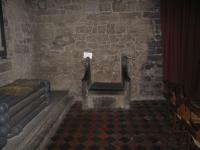 |
| |
|
| |
|
|
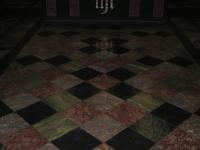
|
Naomi also showed
us an area near the main alter which has the 4 provinces
of Ireland represented in marble:
Black
marble-Leinster
Red
marble-Munster
Green
marble-Connaught
Grey
marble-Ulster
|
| |
|
| |
|
| Back in 1645, the
Papal Nuncio, Cardinal Rinucinni, was in the cathederal
and saw the beautiful sanctuary window behind the main
alter and wanted to buy it from the people of Kilkeny
for £700. They wouldn't sell it so he made detailed drawings
of it and hid them in the Butler Family crypt and they
weren't discovered until 1854 when a Butler was being
buried in the crypt which under the floor near the front
of the church. |
 |
| |
|
 |
We also saw the
tomb of Dame Alice Kytler's father. She was famous,
or should we say infamous, for being a witch! After
inheriting her father's moneylending business, she buried
4 husbands, was convicted of being a witch and then
escaped to England, avoiding being burned at the stake.
There are many
more great things to see in St. Canices but we think
you should come here yourselves and see them.
|
| |
|
 |
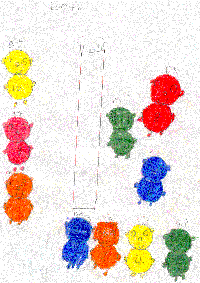 |
 |
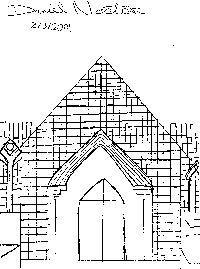 |
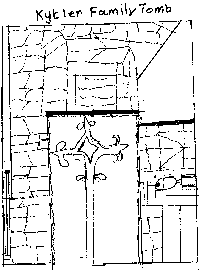 |
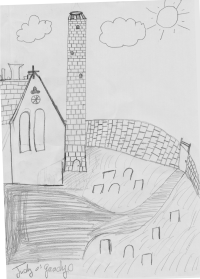 |
 |
When we got back
to class again we drew some pictures of our visit. We
hope that you enjoy them. |

|


